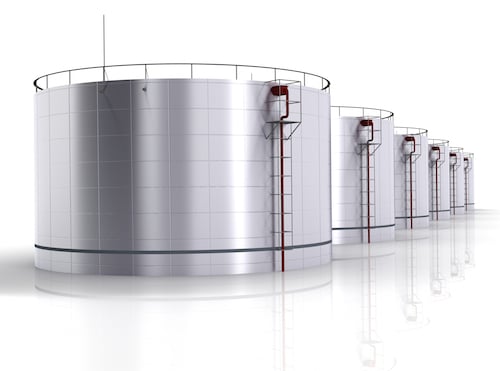Occasionally, we like to provide recaps of articles written by our authors on a specific subject related to asset integrity management. Last time we focused on risk-based inspection. This week, we're highlighting four of our most popular articles written about storage tank inspection. The articles come from a diverse group of owner/users and service companies, and offer multiple perspectives on storage tanks and how their inspection programs should be managed.

What follows are highlights from articles that have been very popular with our readers. Of course, Inspectioneering publishes many more articles related to this subject.
September/October 2013 Inspectioneering Journal: Non-Intrusive Inspection of Above Ground Storage Tanks and Its Use in a Tank RBI Program
Sam Ternowcheck, Mistras Group recently published an article focused on AST's and non-intrusive inspection. This article explores some advanced NDE techniques, such as acoustic emission and automated ultrasonic testing, as well as how to use inspection results in an RBI program. Per the article:
Maintaining the mechanical integrity of above ground storage tanks (AST’s) is the focal point of tank inspection programs. Performing internal inspections is an integral part of a tank integrity program, however, deciding when to take a tank out of service to perform an internal inspection is not an easy determination to make. Tank operators are faced with the question, “do I really have to take this tank out of service right now? And, if so, what kind of damage and how extensive is the damage inside the tank, especially to the floor?”
July/August 2013 Inspectioneering Journal: Tank Inspections per STI SP001 5th Edition
Dana Schmidt, STI/SPFA, provides a thorough explanation of the 5th Edition of the SP001 standard for storage tanks, including revisions in the fifth edition.
STI/SPFA developed its first edition of Standard SP001 in 2000. With the support of the EPA, STI/SPFA used a consensus process to further modify SP001. The committee that developed the 3rd Edition and subsequent editions of SP001 included representatives from major oil companies, petroleum marketers, federal and state regulating agencies, tank fabricators, inspectors, and tank equipment suppliers.
January/February 2012 Inspectioneering Journal: Making the Most of Storage Tank Inspection Data
Devon Brendecke of Quest Integrity Group discusses the evolution of data gathering related to storage tank inspection, resulting in improved accuracy with some data-intensive methods such as fitness for service. From the article:
The emergence of fitness-for-service standards has advanced the state of the art in tank integrity assessment. The application of API 579/ASME FFS-1 Fitness-for-Service rules means that common damage mechanisms such as corrosion, shell bulging, cracking and edge settlement no longer automatically require costly repairs. The fitness-for-service methods and advanced engineering analysis make the most of the standard data collected during required inspections and help define new inspection requirements when additional inspection becomes necessary to "fine-tune" the assessment.
July/August 2002 Inspectioneering Journal: Aboveground Storage Tanks and the Responsible Use and Application of RBI
Even though it was published some 12 years ago, the information presented by Mark Geisenhoff in this article is still applicable today. In summary:
This paper describes the learning of highly experienced RBI users, sharing results of implementation in their plants. The advantages of making and documenting reasonable assumptions will be explored. Additional benefits of the program will be shared, such as streamlined process reliability studies where RBI information can significantly impact time required for completion.
If you're interested in learning more about storage tank inspection and how it fits into the entire fixed equipment mechanical integrity "big picture," you might be interested in a project we're currently working on. Under the authorship of John Reynolds, Inspectioneering has been releasing a comprehensive guide called The 101 Essential Elements in a Pressure Equipment Integrity Management Program. The publication is free and we're releasing new elements every few weeks. Use the button below to download the PDF now.

















Comments and Discussion
There are no comments yet.
Add a Comment
Please log in or register to participate in comments and discussions.